What fledgling am I seeing in my garden?
Summer is officially here, and for the past few weeks we’ve been enjoying seeing a whole variety of recently fledged birds around the visitor centre. So many, in fact, that we’ve been keeping a list!
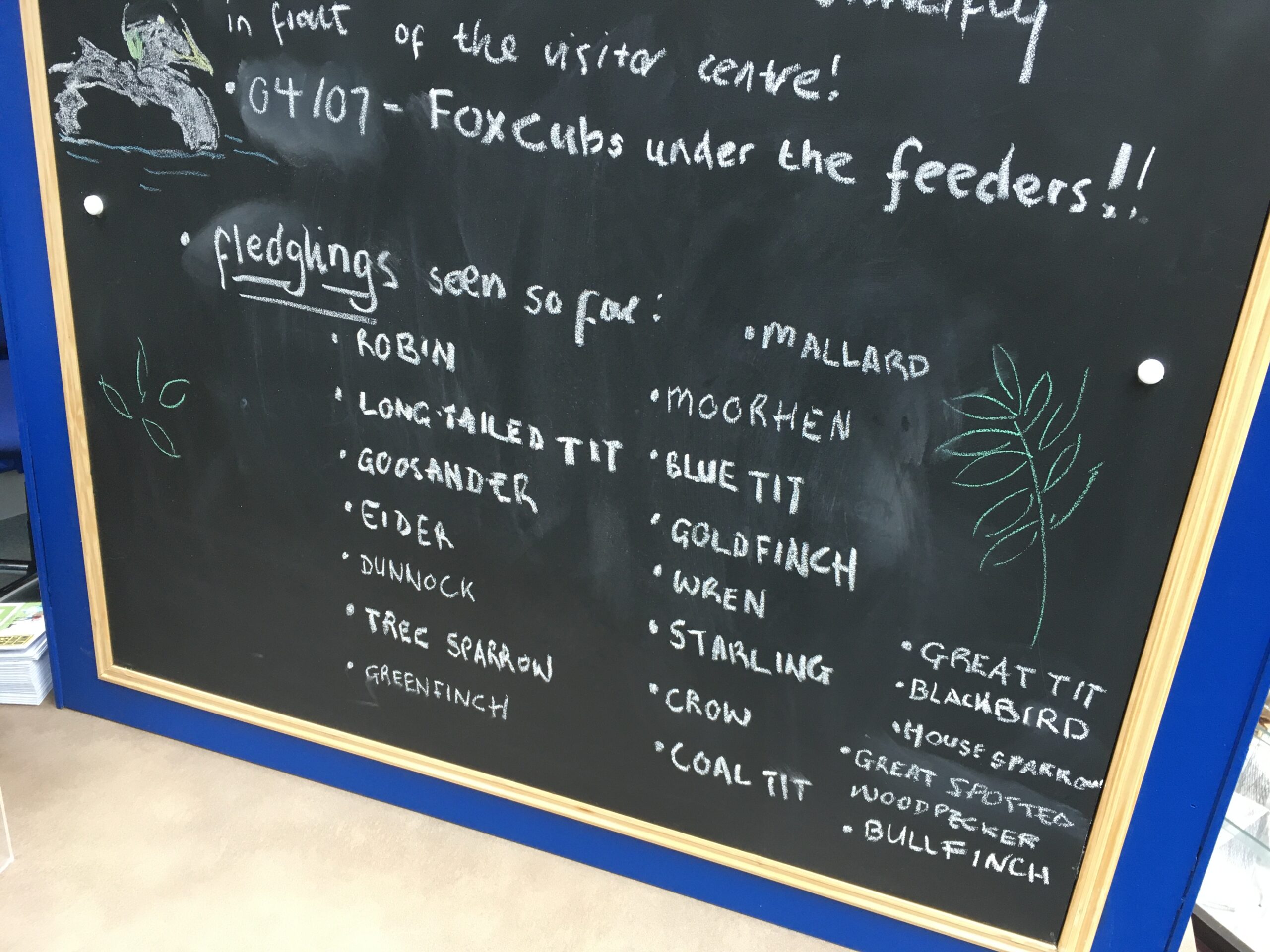
Juvenile birds cause a lot of confusion at this time of year. They often look very different to their adult counterparts, sometimes even sporting different colours, patterns, and bird calls.
We’ve found that visitors are sometimes perplexed by fledgling birds looking, if anything, bigger than their parents. This is because bird chicks do almost all their growing in the nest, and by the time they’ve fledged, their puffy down feathers make them seem a bit larger than they actually are.
So: most fledglings look very soft and chunky, they’ll often have a hint of a yellow gape around their bill, and – something that we get lots of phonecalls about from concerned members of the public – they will often look very lost and helpless. Recently fledged birds will still not be great at flying or feeding themselves, so you might see them sitting under your feeders, looking around in awe/fear of this vast new world they’ve discovered. In most cases, its parents won’t be far away.
Here’s some handy bird ID tips for fledgling birds that you might be most likely to find in your garden in Scotland.
Starling
Starlings are appearing first on our list because we get the most questions about them! Their pale brown plumage makes them look very different to the adults, and when they’re coming into their mature plumage, they can look very peculiar indeed.
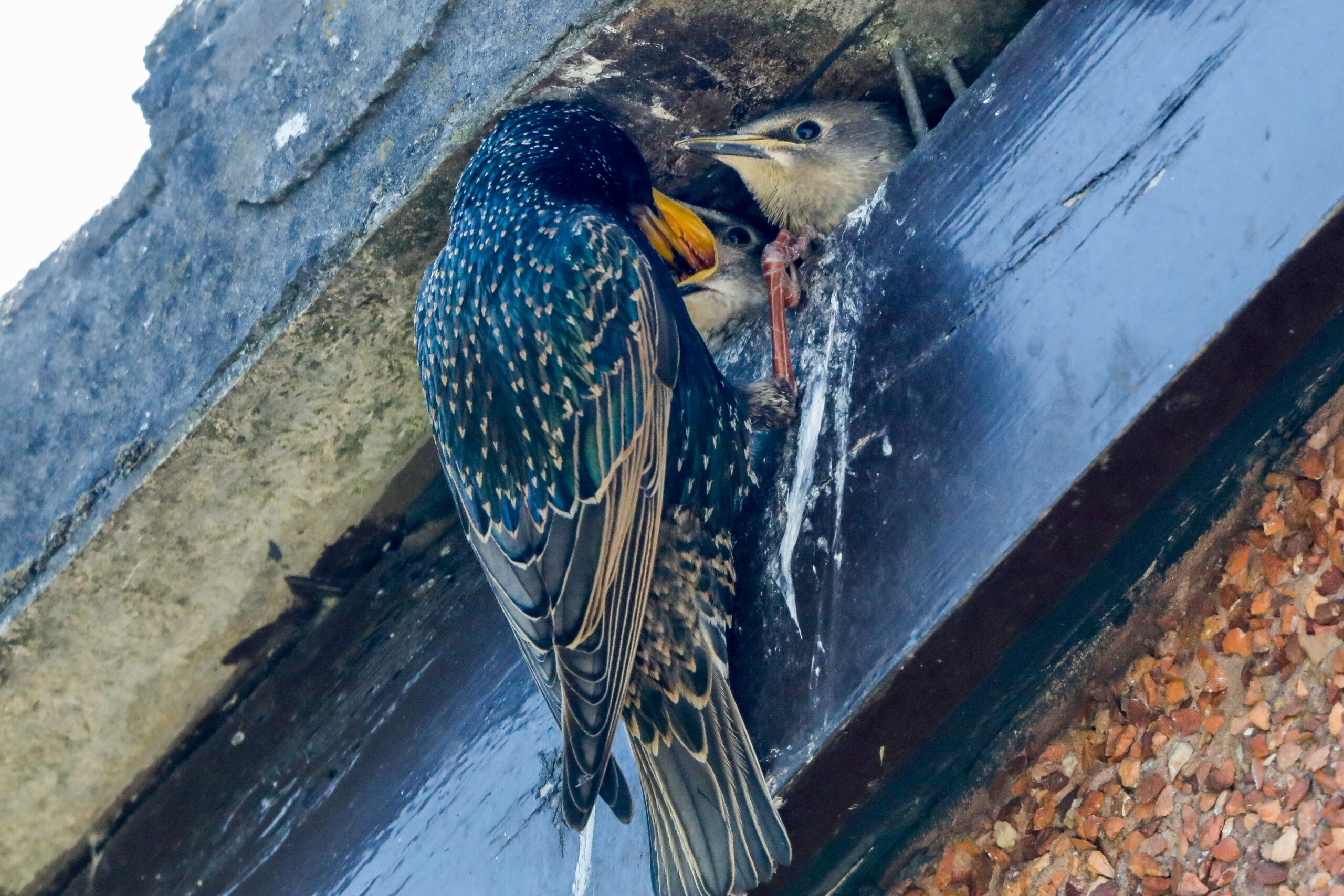
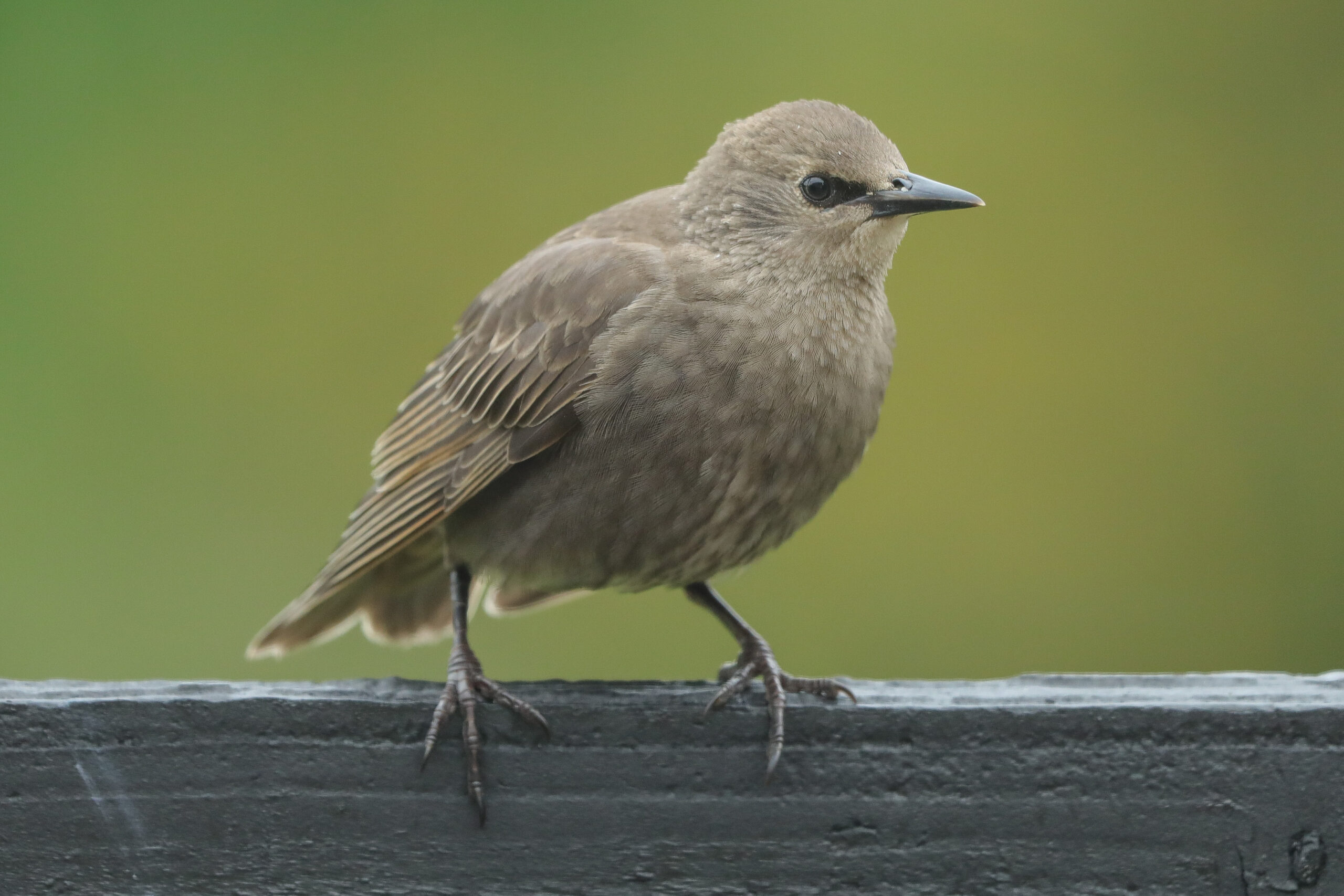
Robin
Robins don’t develop their red breasts until they moult out of their speckled brown downy plumage. Baby robins look quite ‘grumpy’, and often have stray down feathers on their heads like wispy hairs.

House sparrow
Young house sparrows look more like the females than the males, with all brown feathers. We’ve found that they usually have a more prominent gape than other fledgling birds.

Blue tits and great tits
You’ll probably hear blue tit and great tit fledglings before you see them. They have a particularly insistent ‘feed me!’ call. Young blue tits are almost more yellow than blue – the yellow on their fronts is like a pastel lemon colour. Young great tits can look quite yellow too, with more of a dark stripe down their fronts.
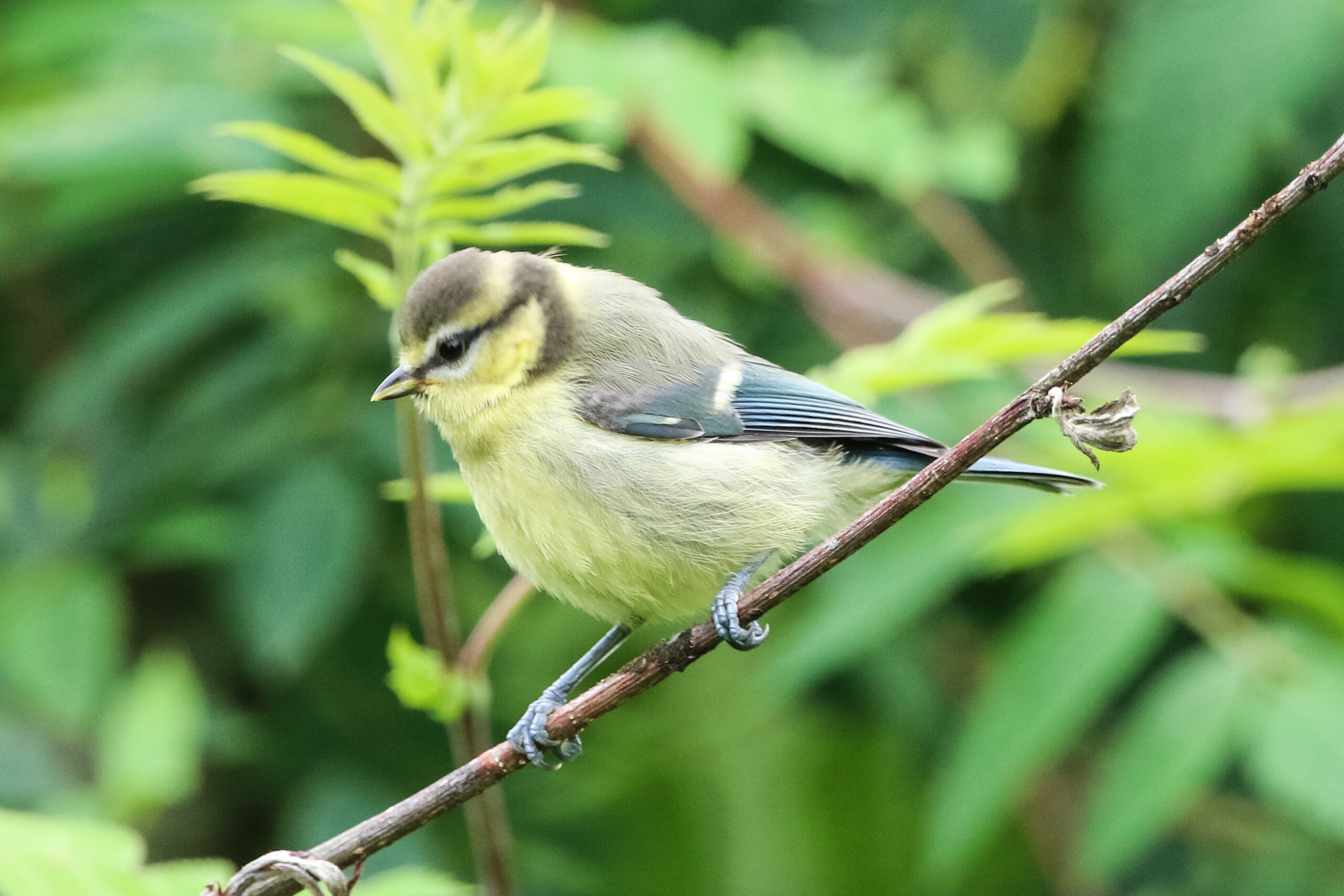
Goldfinch
Young goldfinches are interesting because they look almost exactly like the adults, except none of the red, white, or black colours on their heads have come through yet. But keep an eye out for those giveaway gold accents on their wings.
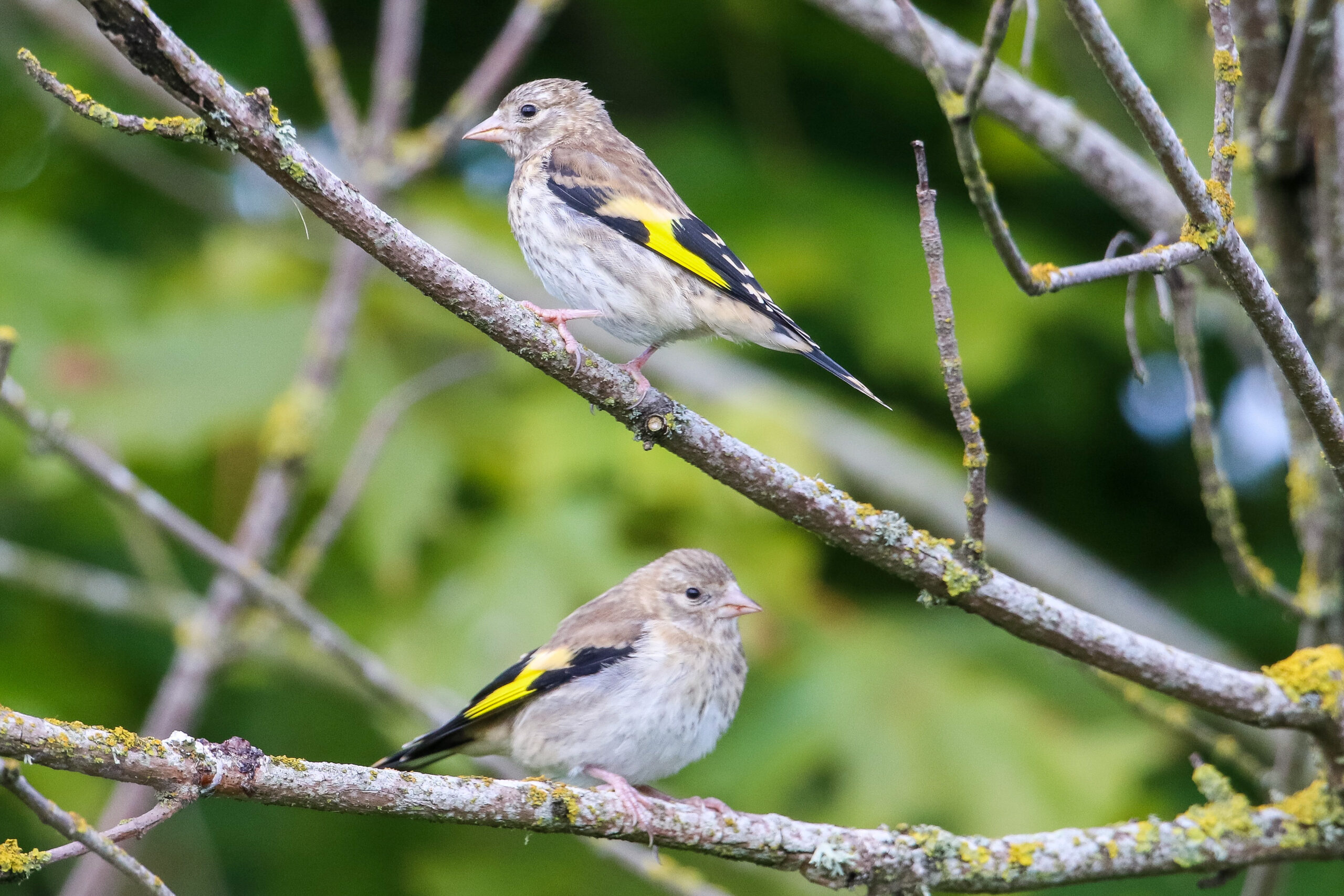
Great spotted woodpecker
If you’re lucky enough to have a family of woodpeckers visiting your garden, here’s how to identify the males, females, and fledglings.
Females have no red on their heads at all, males have red at the back of their heads, and juveniles have red right on top of their heads. A juvenile female great spotted woodpecker’s red cap will slowly disappear as it gets older, while the juvenile male’s red cap will ‘recede’ further down its head. We got a video of a whole family of woodpeckers outside the centre last month.
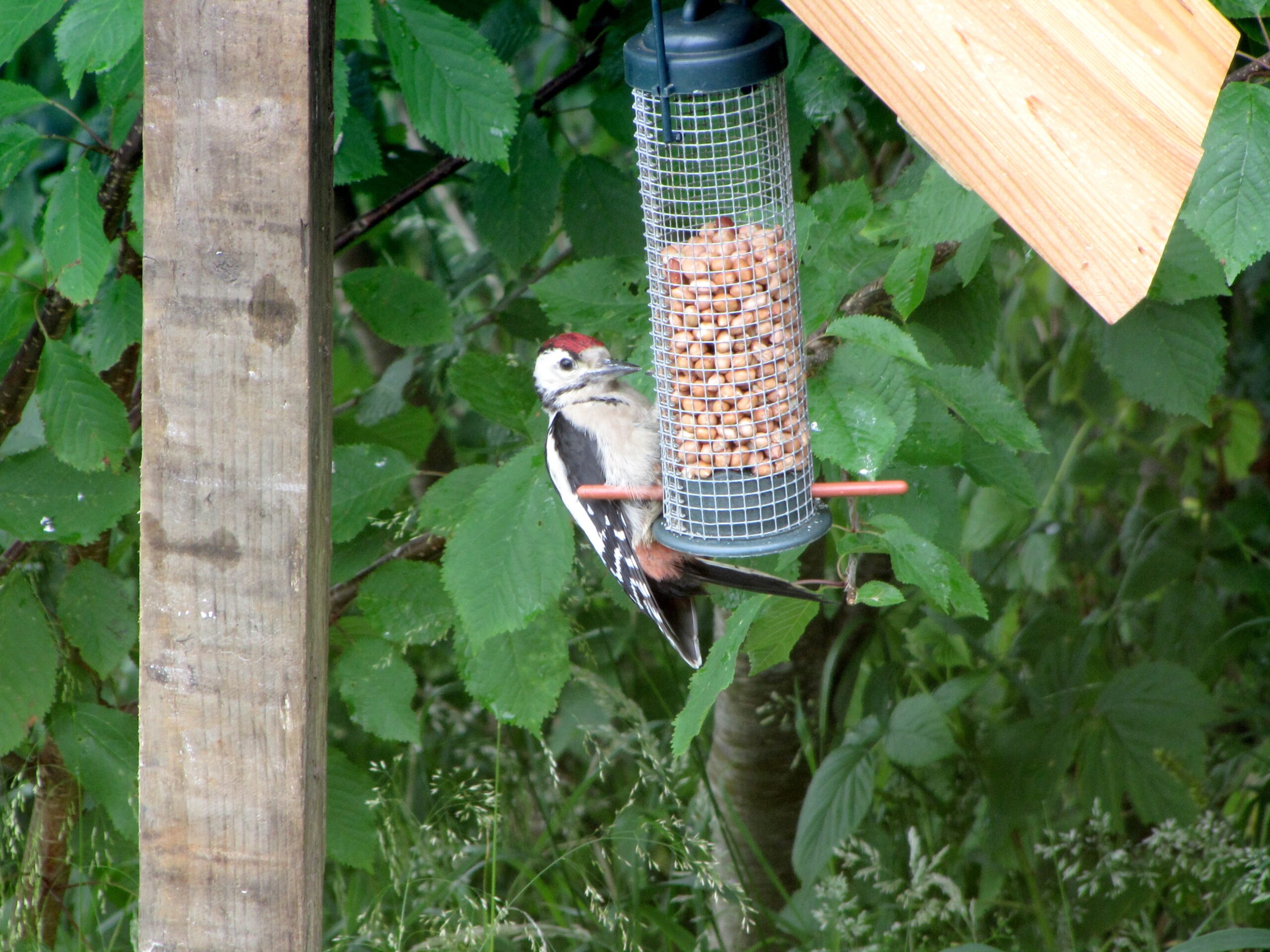
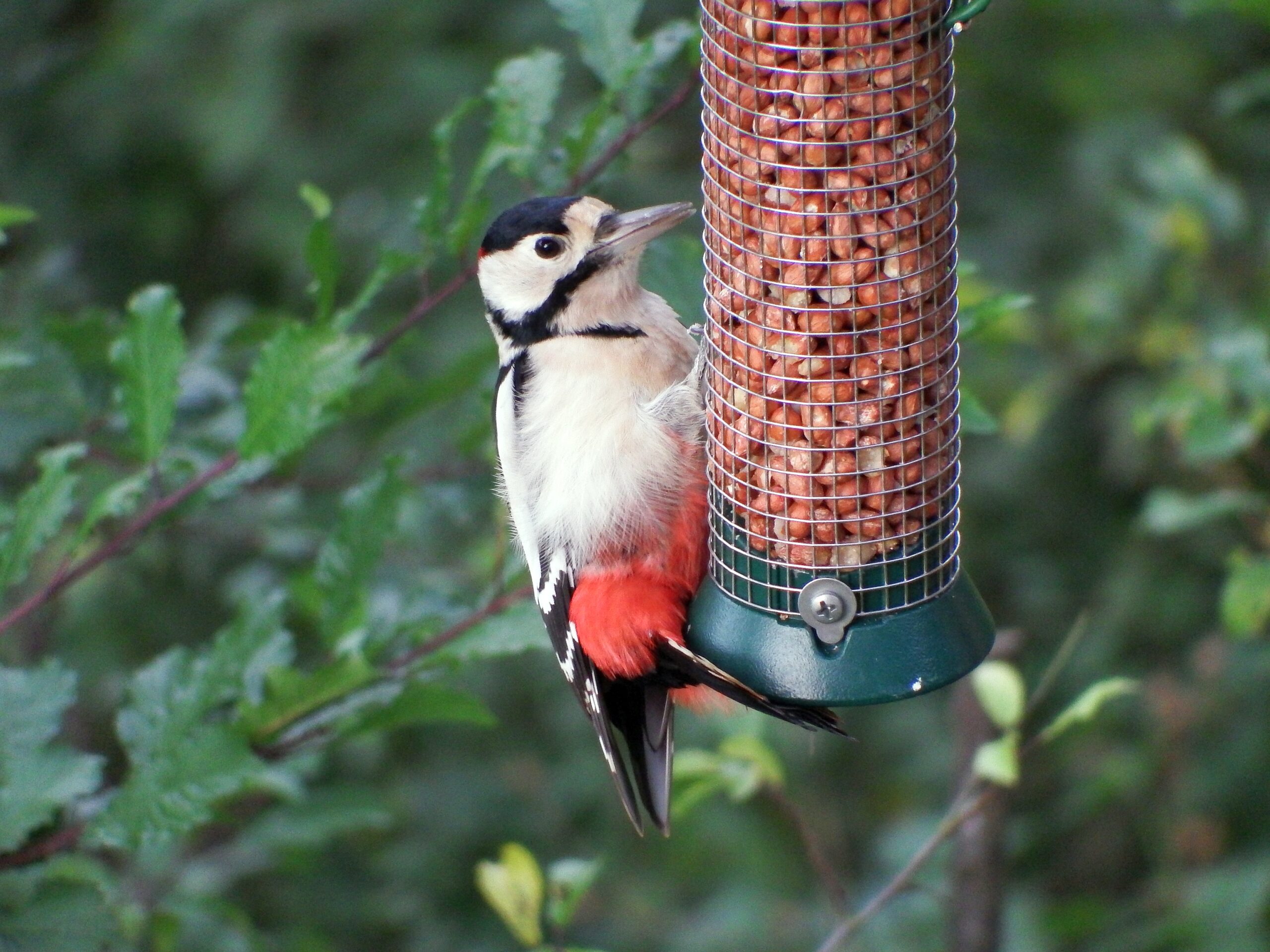
There are of course many other fledgling birds that you could see in your garden at this time of year, but hopefully this little guide has gotten you started at least!
Joanna Peaker
Visitor Centre Assistant Manager
Help protect Scotland’s wildlife
Our work to save Scotland’s wildlife is made possible thanks to the generosity of our members and supporters.
Join today from just £3 a month to help protect the species you love.
Preface
Summer is officially here, and for the past few weeks we’ve been enjoying seeing a whole variety of recently fledged birds around the visitor centre. So many, in fact, that …
